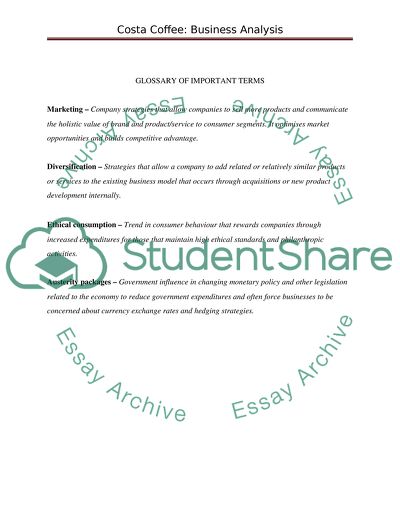Cite this document
(“Costa Coffee: Business Analysis Essay Example | Topics and Well Written Essays - 2750 words”, n.d.)
Costa Coffee: Business Analysis Essay Example | Topics and Well Written Essays - 2750 words. Retrieved from https://studentshare.org/marketing/1627710-a-swot-analysis-on-costa-coffee-shop
Costa Coffee: Business Analysis Essay Example | Topics and Well Written Essays - 2750 words. Retrieved from https://studentshare.org/marketing/1627710-a-swot-analysis-on-costa-coffee-shop
(Costa Coffee: Business Analysis Essay Example | Topics and Well Written Essays - 2750 Words)
Costa Coffee: Business Analysis Essay Example | Topics and Well Written Essays - 2750 Words. https://studentshare.org/marketing/1627710-a-swot-analysis-on-costa-coffee-shop.
Costa Coffee: Business Analysis Essay Example | Topics and Well Written Essays - 2750 Words. https://studentshare.org/marketing/1627710-a-swot-analysis-on-costa-coffee-shop.
“Costa Coffee: Business Analysis Essay Example | Topics and Well Written Essays - 2750 Words”, n.d. https://studentshare.org/marketing/1627710-a-swot-analysis-on-costa-coffee-shop.


